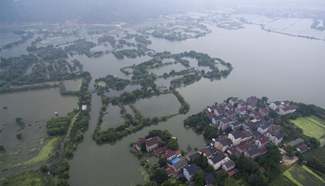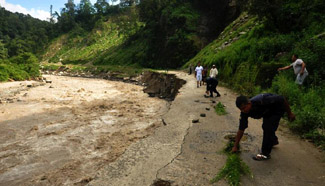KUNMING, July 11 (Xinhua) -- A series of ancient maps drawn by Persian and Arabian geographers from the ninth to 17th centuries show the disputed waters and islands of the South China Sea have been Chinese territory since ancient time, according to a joint study by Chinese and Iranian researchers.
"These maps are evidence from a third party, confirming China's sovereignty over the islands and the related sea area," said Yao Jide, research team leader from Yunnan University.
Yao, whose area of expertise spans China-Iran relations, the ancient Silk Road and Iran, was a former visiting scholar at the University of Tehran, Iran, and also served as head of the university's Confucius School.
This particular study started in March 2012, he explained, when history professor M.B. Vosoughi from the University of Tehran visited Beijing and talked about the ancient maps.
"I was told that these areas were marked with 'China Sea' and 'China Islands' in Persian or Arabic," Yao recalled.
Vosoughi collected more than 50 ancient maps, which referenced Chinese territory, and had these maps translated into Chinese. The maps span around 800 years, when Persian and Arabian navigators sailed the Mediterranean, Indian Ocean, the South China Sea and finally the southeast coast of China.
According to Yao, four of the maps were annotated in Arabic, while the others were in Persian. The maps, in spherical, grid or plane patterns, were designed "the south at the top, the north at the bottom, the east on the left and the west on the right," opposite to those in modern times.
"Although the ancient maps are not as precise as our modern maps, we can still clearly see that on some of the maps, the waters between the West Pacific and the Indian Ocean are annotated with 'China Sea,' 'China Islands' and 'China Gulf,'" he said, adding such names have demonstrated China's sovereignty over the area.
"We can safely conclude that these waters and islands are part of Chinese territory based on the naming principle of maps and semantics," he said.
Lin Wenxun, president of Yunnan University, said these ancient maps were of great value as they offered information spanning centuries of communication between the East and West and the history of navigation.
The research team is translating the maps into English so that they can publish an atlas in Persian, Chinese and English.











